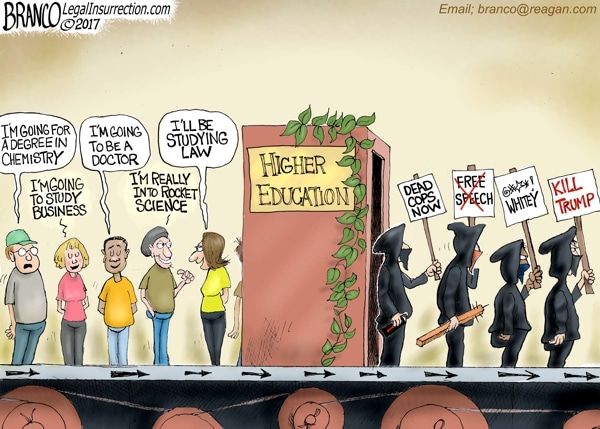
In recent U.S. elections, Democrats have tended to perform better among college graduates with bachelor’s degrees or higher while Republicans have tended to do better among those with either no college or among associate’s degree graduates.
For example, in 2022, in the election for the U.S. House, those with bachelor’s degrees preferred the Democratic candidate 52 percent to 46 percent and those with master’s degrees or higher preferred the Democratic candidate, 57 percent to 41 percent, according to the CNN exit poll.
Whereas, those with no college preferred the Republican candidate 62 percent to 36 percent, those with some college 51 percent to 47 percent and those with an associate’s degree 54 percent to 44 percent.
Similar patterns played out in 2020, 2018 and 2016 with some variation: Democrats won some college voters in 2020 and 2018, and Republicans won them in 2016. Otherwise, Democrats have still had an edge among bachelor’s degree and above voters, and Republicans consistently did much better with no-college and associate’s degree voters.
But it’s super easy to see why that is when one examines the population of college attendees according to the latest data from the Bureau of Labor Statistics: It’s the gender gap.
In short, 76 million women attended college, including 16.75 million with some college, 12.6 million with associate’s degrees, 28.2 million with bachelor’s degrees and 18.4 million with master’s degrees or above.
Comparatively, only 67.9 million men have attended college, including 16.1 million with some college, 10.87 million with associate’s degrees, 25.25 million with bachelor’s degrees and 15.75 million with master’s degrees or above.
Whereas, there are 42.8 million men who have not gone to college compared with 40.7 million women who have not gone to college.
As a result, 65 percent of working aged women have attended college at some level, compared with 61.3 percent of men, a trend that has been going on since the 1980s as female enrollment in higher education has outpaced men, who are more likely to work blue collar jobs including manual labor.
In other words, women have 52.7 percent of all the bachelor’s degrees and 53.8 percent of all the master’s degrees and above, as 52.8 percent of those who attended college were women, compared to 47.2 percent of men.
But the trend has become more exacerbated in recent years as recent enrollees to four-year colleges are 1.3 to 1 female to male as of 2019, according to Oksana Leukhina and Amy Smaldone of the Federal Reserve Bank of St. Louis. That’s 56.5 percent to 43.5 percent, female to male in higher education, disproportionate compared to national data.
Looking at the CNN exit polls again, in 2020, females voted for Joe Biden over Donald Trump 57 percent to 42 percent, whereas males preferred Trump 53 percent to 45 percent.
In 2022, the gender gap evened out some, with 53 percent of women voting Democratic to 45 percent, whereas men preferred the Republican candidate 56 percent to 42 percent.
But that still shows the persistent gender gap: men are more likely to vote Republican, and women are more likely to vote Democratic.
As a result, in 2020, 55 percent of college graduates preferred Biden, with 43 percent for Trump, and those without college degrees wanted Trump over Biden, 50 percent to 48 percent. In 2022, amid heavier Republican turnout, it was 54 percent of college graduates voting Democratic and 44 percent Republican, and 55 percent of those with no degree voting Republican to 43 percent Democratic.
In terms of voting patterns, Democrats appear to have a political incentive to promote college education. For example, in 2022, white women with college degrees voted Democratic 56 percent to 42 percent. Whereas white women with no degree voted Republican 61 percent to 37 percent.
And Republicans appear have a political incentive to shun college education, with white men with a college degree voting Republican 52 percent to 45 percent, and white men with no degree voting Republican 72 percent to 26 percent.
The end result will be that as men go to college less, they’ll become more Republican, and as women attend college more, they’ll become more Democratic.
One of the side effects of this disparity is the not only the advantage Democrats possess among college graduates in voting, but also representation in the jobs that require college educations, including teaching, media and government bureaucracy, institutional bias Republicans often complain about. No wonder.
Robert Romano is the Vice President of Public Policy at Americans for Limited Government Foundation.






